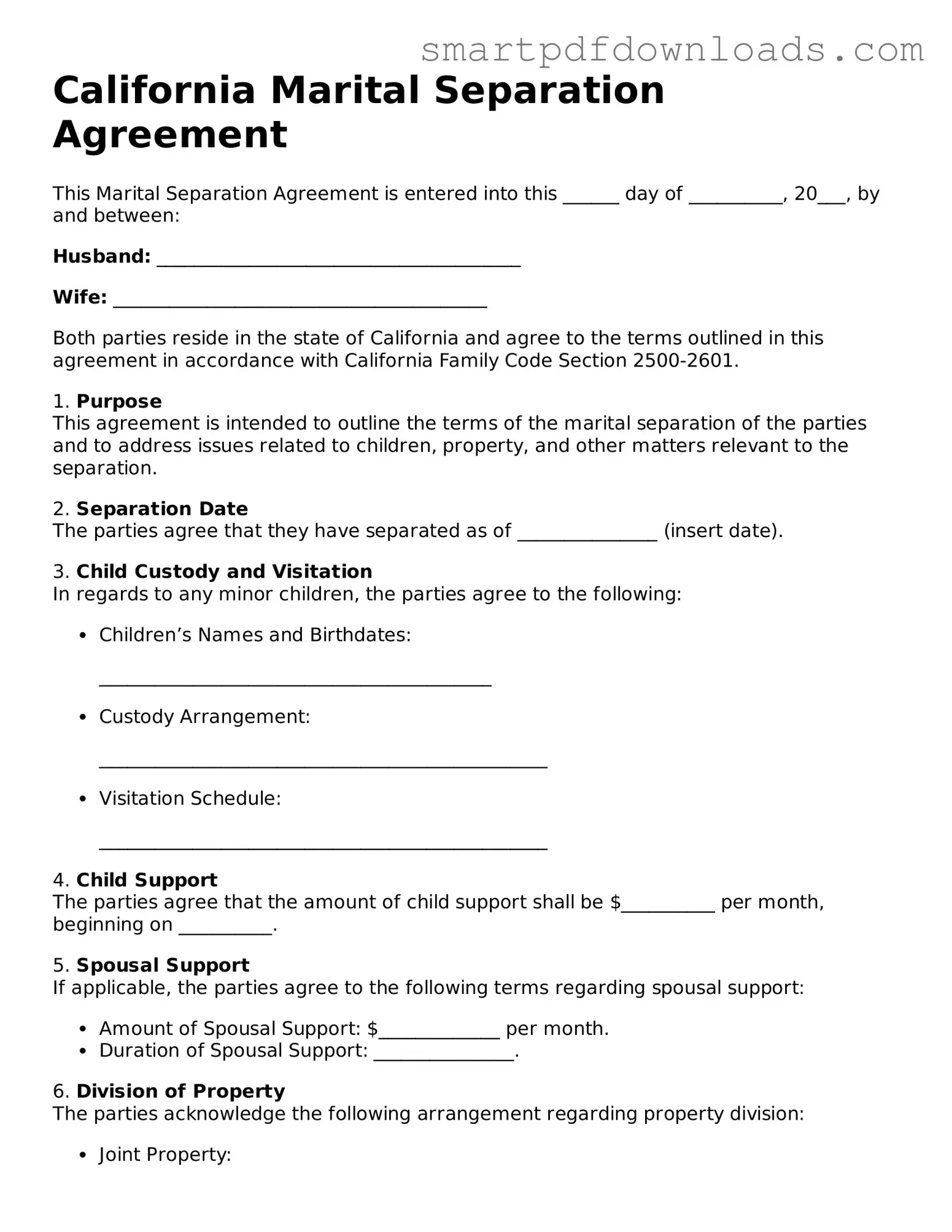California Marital Separation Agreement
This Marital Separation Agreement is entered into this ______ day of __________, 20___, by and between:
Husband: _______________________________________
Wife: ________________________________________
Both parties reside in the state of California and agree to the terms outlined in this agreement in accordance with California Family Code Section 2500-2601.
1. Purpose
This agreement is intended to outline the terms of the marital separation of the parties and to address issues related to children, property, and other matters relevant to the separation.
2. Separation Date
The parties agree that they have separated as of _______________ (insert date).
3. Child Custody and Visitation
In regards to any minor children, the parties agree to the following:
- Children’s Names and Birthdates:
__________________________________________
- Custody Arrangement:
________________________________________________
- Visitation Schedule:
________________________________________________
4. Child Support
The parties agree that the amount of child support shall be $__________ per month, beginning on __________.
5. Spousal Support
If applicable, the parties agree to the following terms regarding spousal support:
- Amount of Spousal Support: $_____________ per month.
- Duration of Spousal Support: _______________.
6. Division of Property
The parties acknowledge the following arrangement regarding property division:
- Joint Property:
________________________________________________
- Separate Property:
________________________________________________
7. Debts
The parties agree to the following division of debts:
- Debt Type: ______________ Amount: $______________.
- Debt Type: ______________ Amount: $______________.
8. Other Terms
Any additional mutually agreed upon terms should be recorded here:
__________________________________________________
9. Legal Representation
Each party acknowledges they have had the opportunity to obtain independent legal advice regarding this agreement.
10. Entire Agreement
This document represents the entire agreement between the parties pertaining to the subject matter herein and supersedes any prior agreements.
IN WITNESS WHEREOF, the parties have executed this Agreement on the date first above written.
Husband's Signature: ___________________________ Date: _______________
Wife's Signature: ____________________________ Date: _______________
